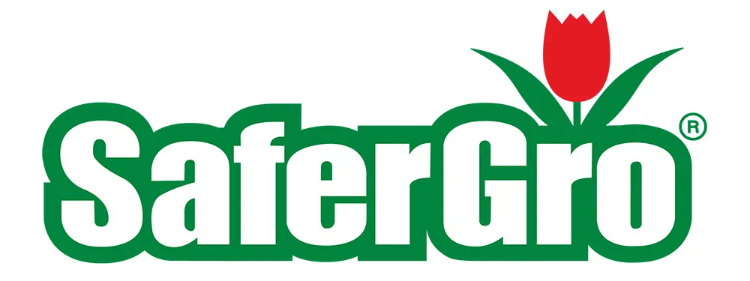The Need for Biologicals - How Biological Products Can Save Our Environment
Currently, the cost of synthetic fertilizers and pest methods often involve the use of chemicals and are not cost-effective to the grower in the long run due to its harmful effects on the atmosphere and the environment. These practices destroy topsoil, of which 95% of the world’s food is grown with. It is estimated that nearly half of the world’s most productive soil has been lost to conventional farming. At the current rate, all the remaining topsoil will be gone in about 60 years. With this in mind, it’s very important that we reduce or completely end synthetic applications in agriculture.
The Biological Solution
Our soil is filled with a thriving community of microbes which includes fungi, algae, bacteria, protozoa, actinomycetes, and nematodes. It is estimated that a single teaspoon of soil can consist of 100 million to 1 billion beneficial bacteria. In losing topsoil, we lose this soil diversity which leads to infertility of our Earth necessary for food growth.
To save our world’s soil and its diversity, we’ve incorporated these microbes into our biological products which offer a wide range of functions for agriculture and the environment. These microbes help plants with water movement, nutrient cycling, disease suppression and much more.
The Benefits of Biologicals in Agriculture

Biological products offer many benefits. The top three for many growers are its return on investment, flexibility, and environmental impact.
Return- Biologicals improve food systems by allowing growers to provide healthy and affordable produce to consumers. Growers experience greater yields and profitability while minimizing expenses on crop inputs.
Flexibility- Biologicals provide flexibility in application timing due to shorter re-entry (REI) and pre-harvest intervals (PHI). Short PHIs in particular, allow growers better maintained shipping schedules.
Environment – Since many biological products undergo stringent regulations and environmental impact assessments prior to commercialization, growers rest assured that the products are safe and biodegradable in natural environments.
What are Biologicals?
Biological products are derived from living organisms, plants, beneficials, animals, and microorganisms. These natural solutions can complement conventional fertilizers and other agrichemicals or they can be used on their own as an effective integrated crop management strategy. They are largely broken down into three main categories:
- Biostimulants
- Biopesticides/Biocontrols
- Biofertility
Biostimulants
Biostimulants can be natural or synthetic substances applied to seeds, plants, and soil. They can aid in crop health, growth, and productivity.
Types of Biostimulants.
- Humic and Fulvic Acids
- Protein Hydrosylates
- Inorganic Compounds
- Chitosan and Other Biopolymers
- Beneficial Bacteria like Fulzyme
Biopesticides
Biopesticides are derived from natural living specimens such as microorganisms, plants, and animals. Biopesticides are environmentally friendly with a narrow target range and highly specific modes of action. This makes them highly effective against pests without damaging plants or adding harmful chemicals to water supplies. Made with natural ingredients, biopesticides are considered safe and are less hazardous for the environment than chemicals or synthetic pesticides.
Types of Biopesticides
- Bacterial Biopesticides
Bacterial biopesticides are most effective when ingested by insects or their larvae. For example, Bacillus thuringiensis (Bt), produces a toxin that binds to the larval stomach cells.
- Fungal biopesticide
Fungal biopesticides, such as Mildew Cure, work by physical contact. This typically consist of fungal spores and can be applied by foliar spray.
- Plant-Incorporated Protectants
These type of biopesticides, like Pest Out, are derived of genetic material incorporated into plants.
Biofertilizers
Biofertilizers are products that contain living microorganisms that promote the growth of plants by increasing the supply or availability of primary nutrients to soil. Biofertilizers are very beneficial in that they allow for more soil nutrient availability, promote plant nutrient absorption and growth, improve soil and plant health, and increase yields.

Types of Biofertilizers
- Bacteria: Nitrogen-fixing bacteria
Nitrogen-fixing nodules are formed by the association of the bacterium Rhizobium which help fix atmospheric nitrogen into organic forms which can be easily absorbed by the plant.
- Fungi: Mycorrhizae
Used in Mycormax, this fungus helps absorb phosphorous in the soil and makes it readily available to the plant delivering:
- Tolerance to drought conditions and salinity.
- Resistance to root-borne pathogens.
- Increase in plant growth and development.
- Cyanobacteria
Blue green bacteria which help with atmospheric nitrogen and contributes to organic matter in the soil.
Biologicals for All Types of Growers
However, perhaps the most exciting and more important for topsoil biological products lower greenhouse gas emissions caused by synthetic fertilizers. These products made available by Safergro boast their environmental efficiency while delivering high yields to growers. For growers that are looking for returns on their investment and products that protect soil and our planet for years to come, look no further that Safergro and JH Biotech biological products.
